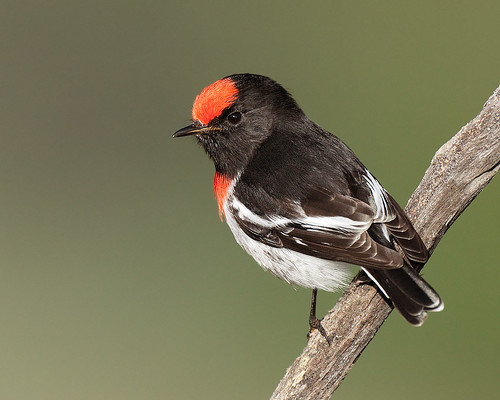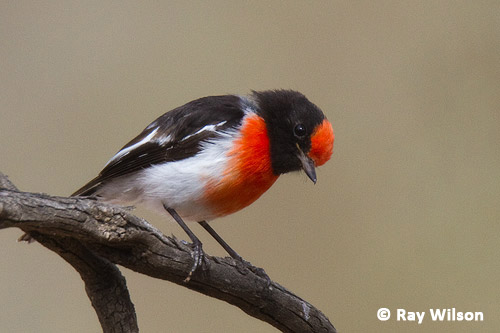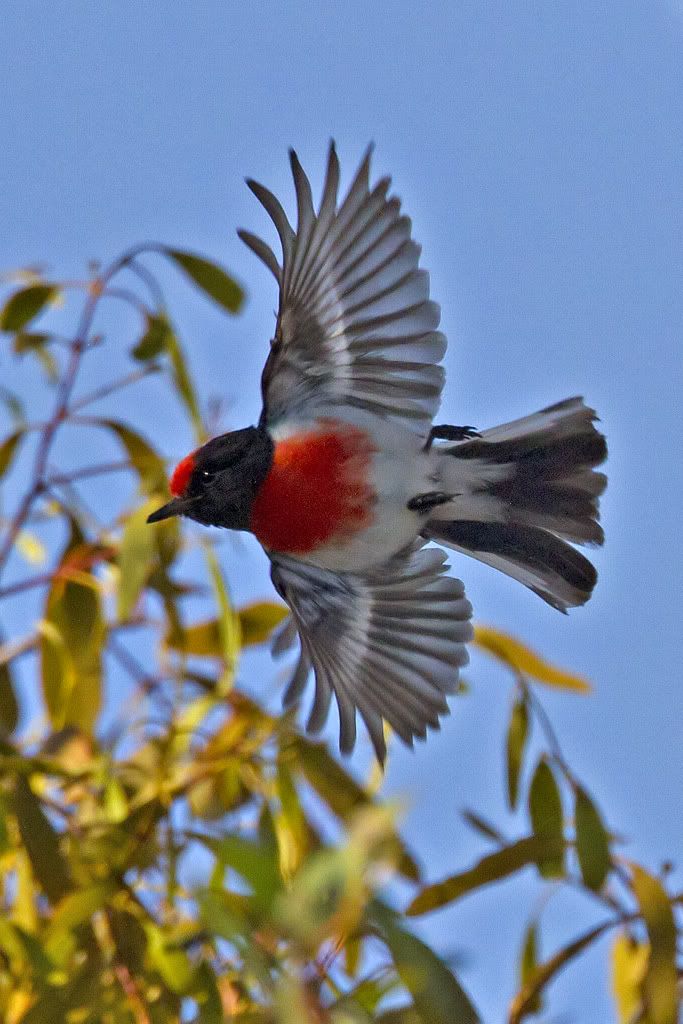Red Caped Robin Biography
Often tame, confiding and curious, the Red-capped Robin is regularly recorded as part of mixed-species feeding-flocks, often joining with other small insectivorous species, especially with various species of thornbills. Foraging Red-capped Robins usually pounce onto their prey on the ground from an elevated perch, such as a low branch or a stump. The species has also been recorded raking the leaf litter with its feet, regularly stopping and holding its head cocked to one side, presumably to detect any prey it has disturbed.








Often tame, confiding and curious, the Red-capped Robin is regularly recorded as part of mixed-species feeding-flocks, often joining with other small insectivorous species, especially with various species of thornbills. Foraging Red-capped Robins usually pounce onto their prey on the ground from an elevated perch, such as a low branch or a stump. The species has also been recorded raking the leaf litter with its feet, regularly stopping and holding its head cocked to one side, presumably to detect any prey it has disturbed.
The male Red-capped Robin is black above and white below with a distinctive scarlet-red cap, white shoulders, and a red breast that contrasts strongly with a black throat. The black wing is barred white and the tail is black with white edges. Females are quite different in appearance: grey-brown above and off-white below, with a reddish cap, brown-black wings barred buff to white, and some have faint red on the breast. Young birds are similar to females but are streaked white above, have an pale buff wing bar and their breast and sides are streaked or mottled dark-brown.
The Red-capped Robin is the smallest red robin. It can be distinguished from other red robins by the unique red cap in the male, and by the dull red cap in the female. Males are similar to the Crimson Chat, Epthianura tricolor, but this species has a white throat, a white eye, is not as plump and lacks the white wing streak.
The Red-capped Robin is found from Queensland (rarely above latitude 20°S), through New South Wales, mainly west of the Great Dividing Range, to Victoria and South Australia. Also found in Western Australia Rottnest Island Northern Territory
The Red-capped Robin is found in most inland habitats that have tall trees or shrubs, such as eucalypt, acacia and cypress pine woodlands. It is mainly found in the arid and semi-arid zones, south of the Tropics, with some extension into coastal regions. The species is seen on farms with scattered trees, as well as vineyards and orchards. It is only occasionally reported in gardens.
The Red-capped Robin feeds on insects and other invertebrates. It forages on the ground or in low vegetation, and will often perch on a stump or fallen branch, darting down to take insects from the ground. Can be seen in mixed feeding flocks with other small insect-eating birds such as Willie Wagtails, Rufous Whistlers and Black-faced Woodswallows.
Red Caped Robin

Red Caped Robin

Red Caped Robin

Red Caped Robin

Red Caped Robin

Red Caped Robin

Red Caped Robin

Red Caped Robin

Red Caped Robin
Red Capped Robin
Red Capped Robin
No comments:
Post a Comment